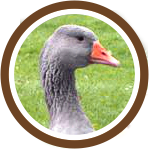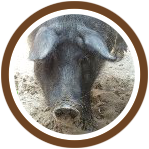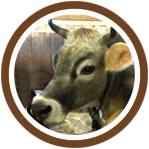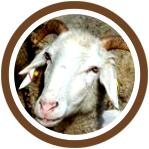Landrace Goose
Breeding objectives
The efforts for the conservation of this goose type date back to 1952, when Günther Warmuth began to search for remnants of the ecotype in Bavaria and subsequently (until 1999) established a survivable population. In Austria, too, some breeders became involved in conservation. In Switzerland, the reestablishment of the breeding began in 1986. Some breeding groups exist also in former Austrian South Tyrol.

Foto Kurt Kusstatscher
The landrace goose is one of the lighter geese. It has original properties and performance characteristics such as pronounced nesting instinct, resistance to changing weather conditions, marching capability and excellent feed conversion. For many centuries the goose was widespread and especially appreciated because of the cost-effective keeping. The robust landrace goose is capable to look for a large portion of its feed itself and reproduce without further human input, thanks to its pronounced brooding and rearing instinct and performance.
The conservation of these features is the objective of breeding efforts. In addition to their elegance and beauty, the inner “values” are of importance, such as the vigilance with regard to two- or four-legged visitors, the exemplary breeding and rearing behaviour and, last but not least, the tender and tasty meat. Non fattened female geese reach a live weight of approximately 5.5 - 6 kg, ganders about 7 kg. Fattened geese can reach weights of up to 9 - 10 kg. The animals are either pure white, grey or more or less piebald.





